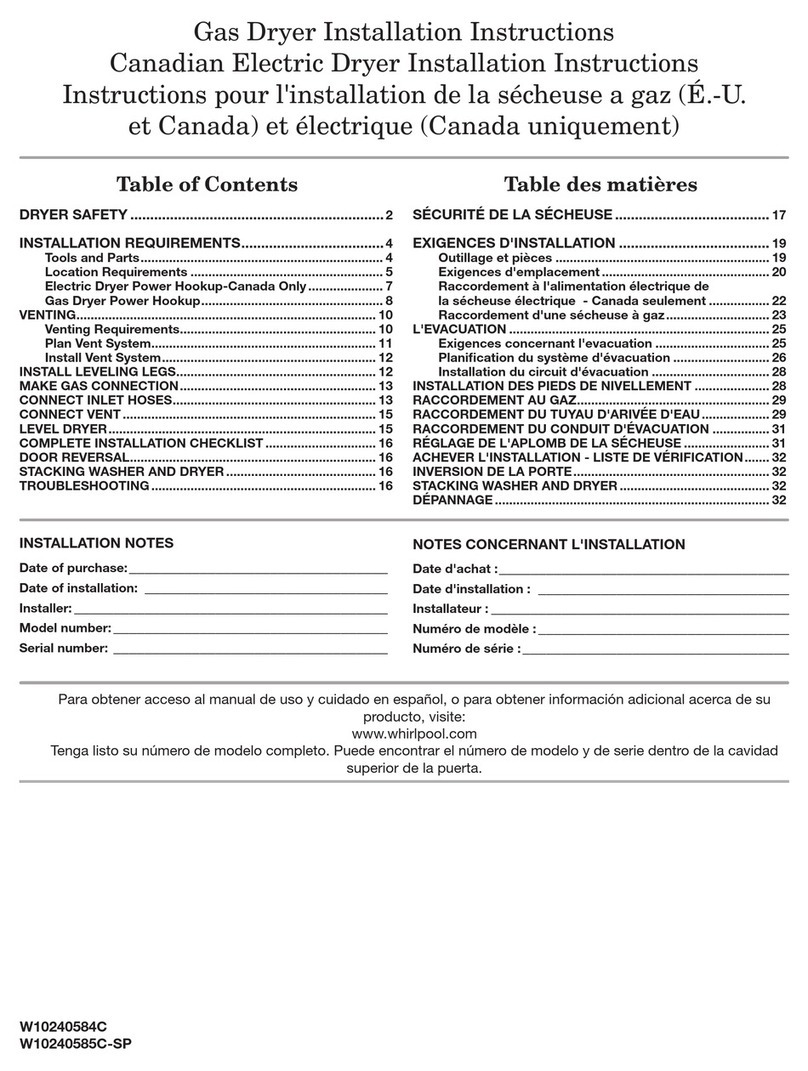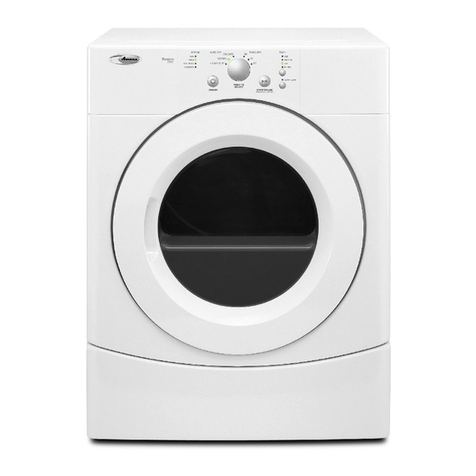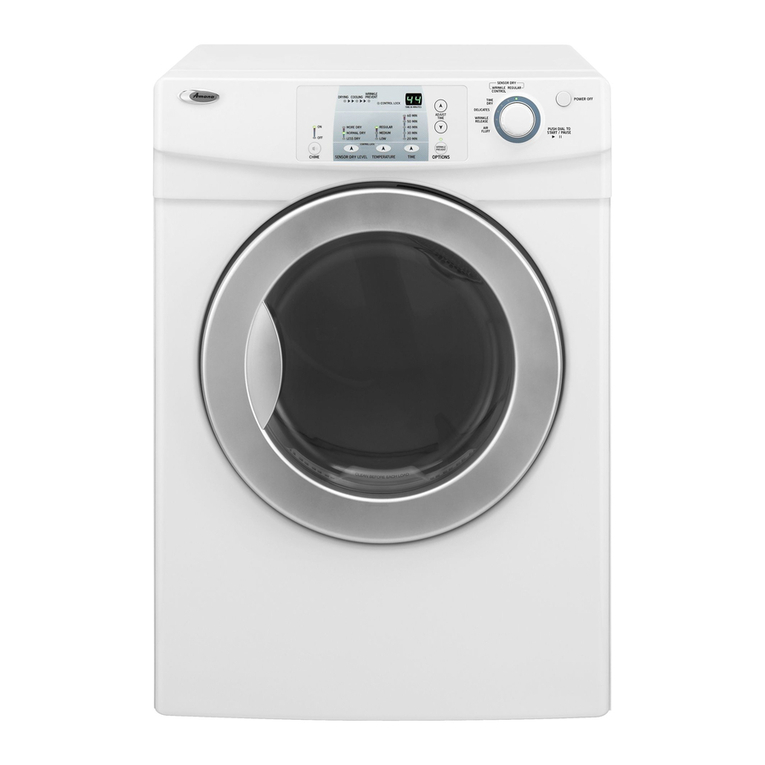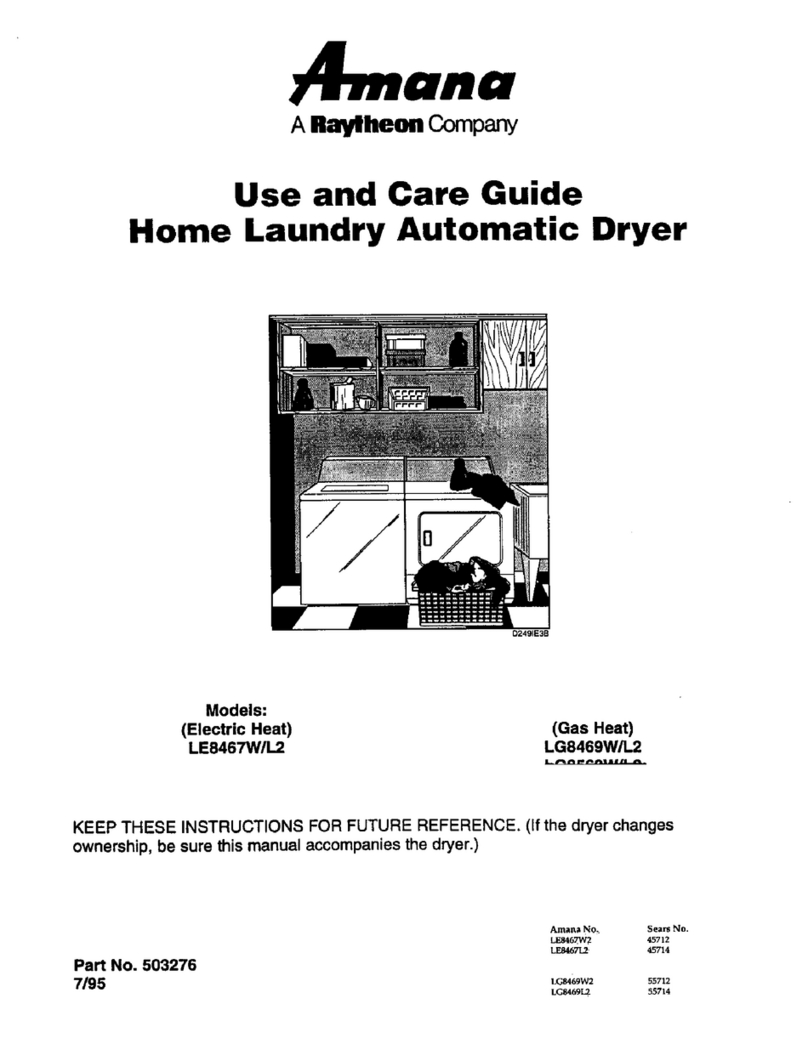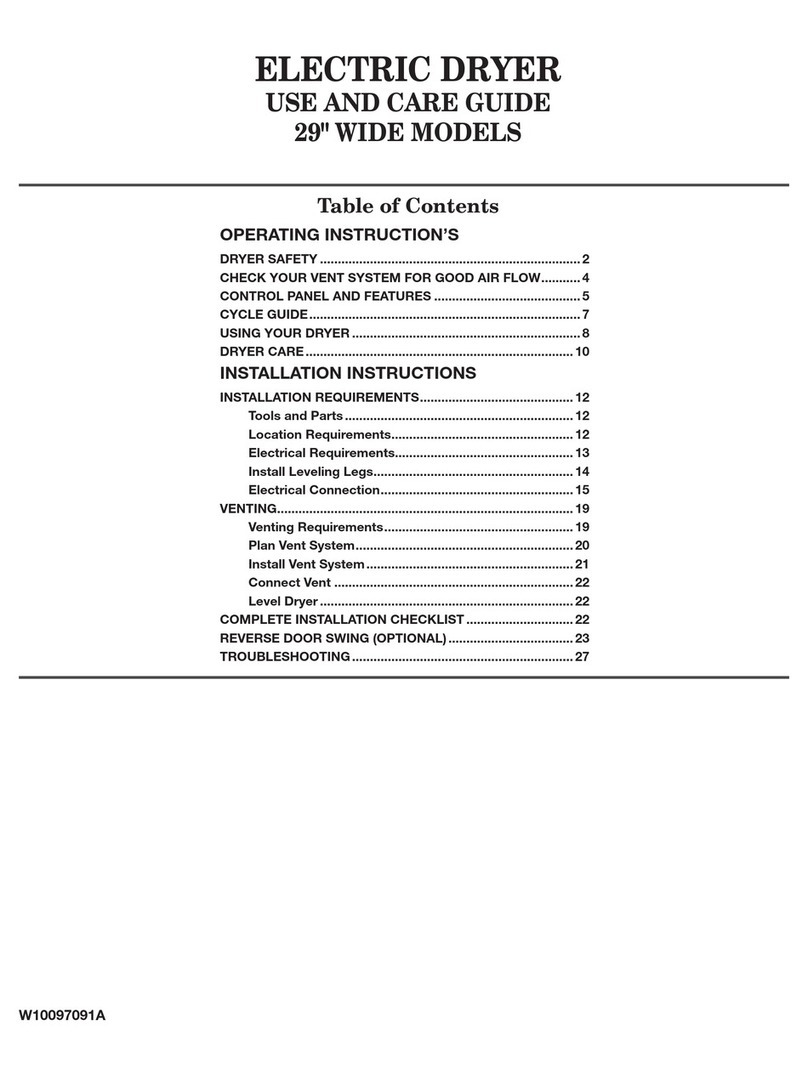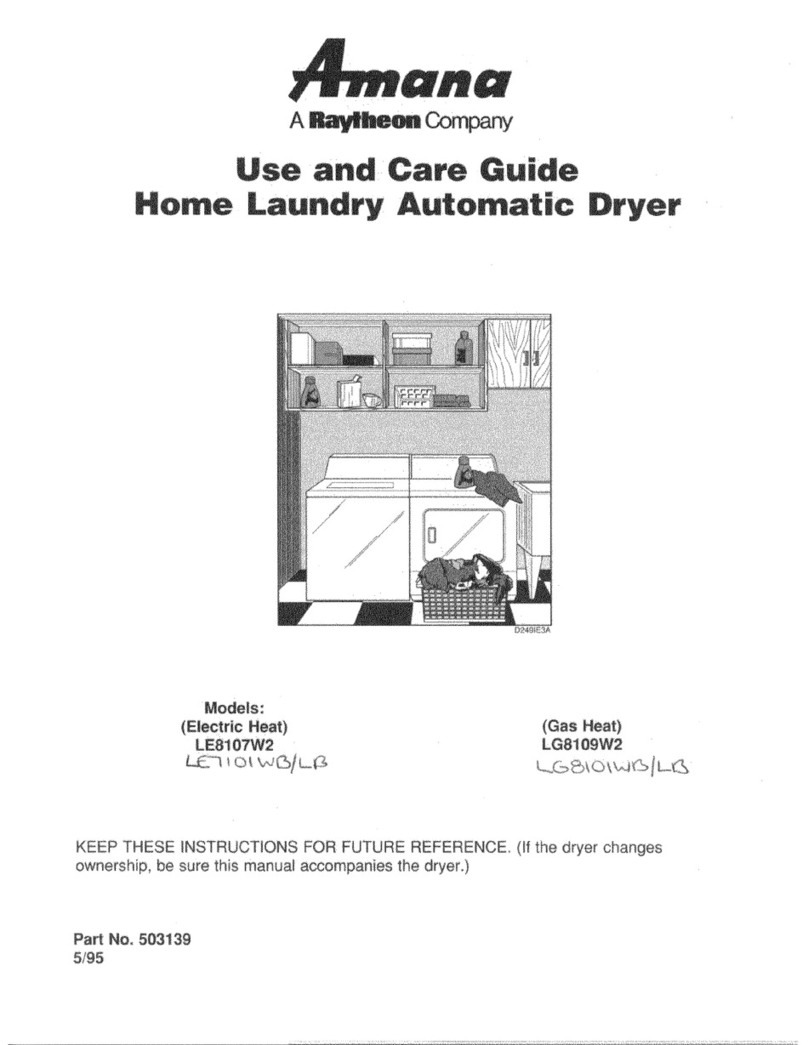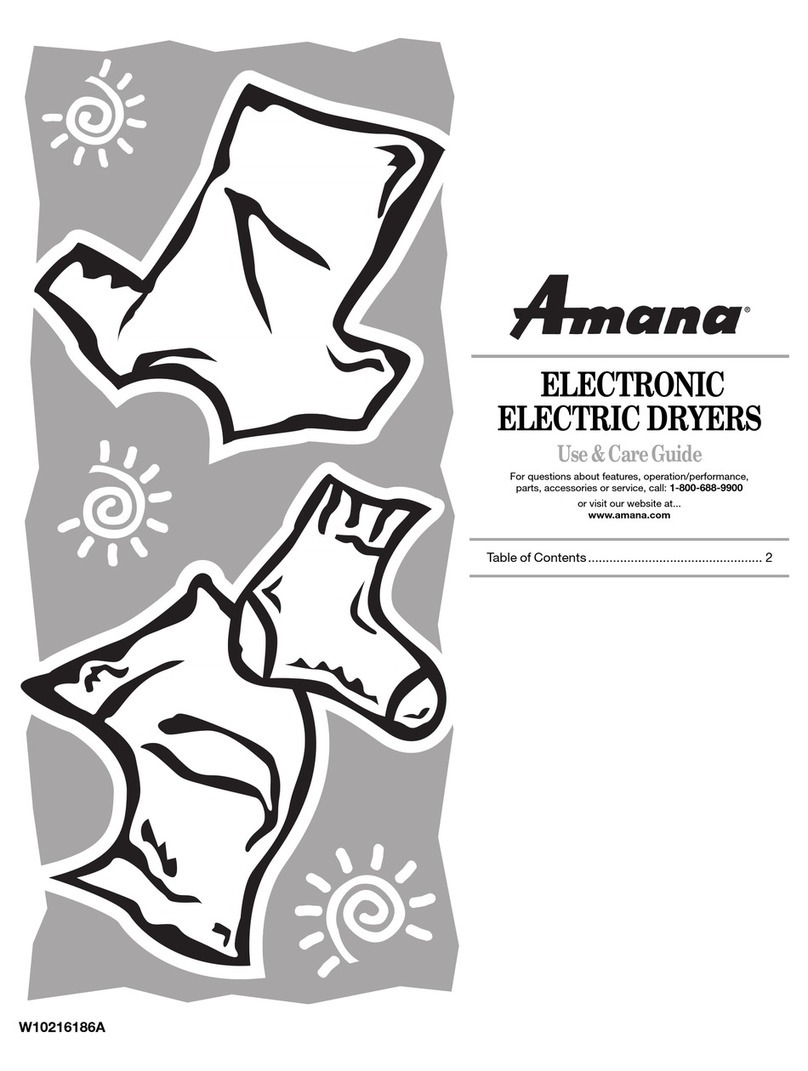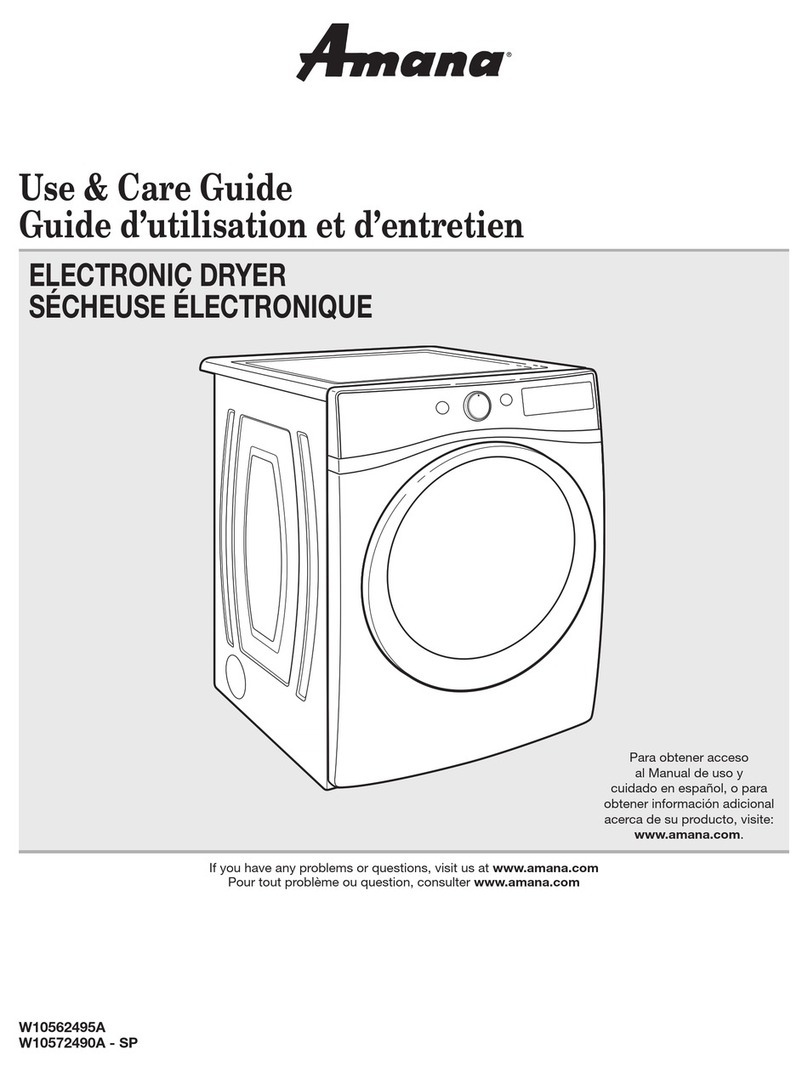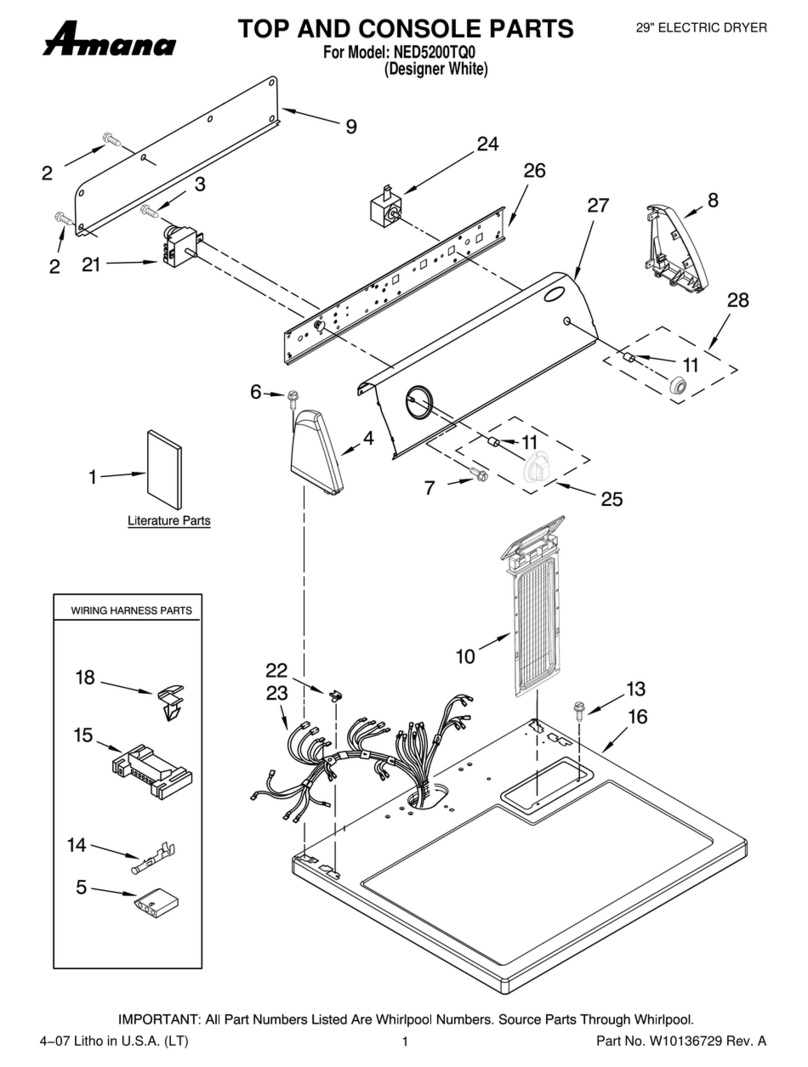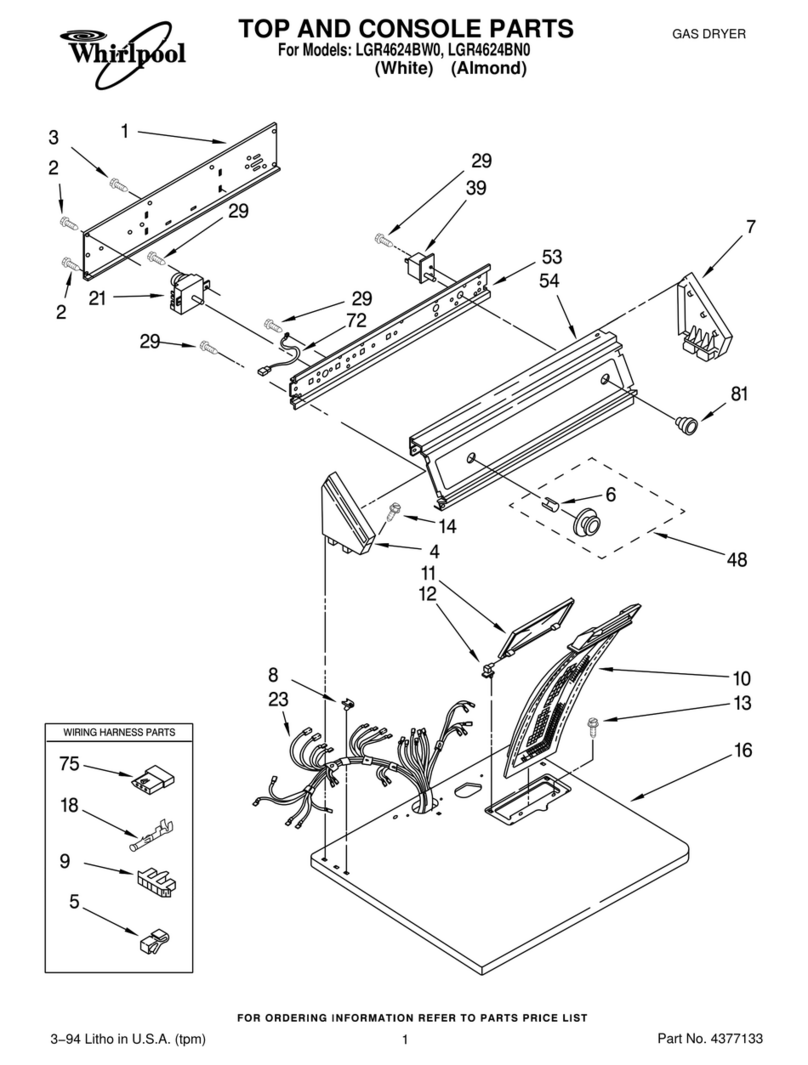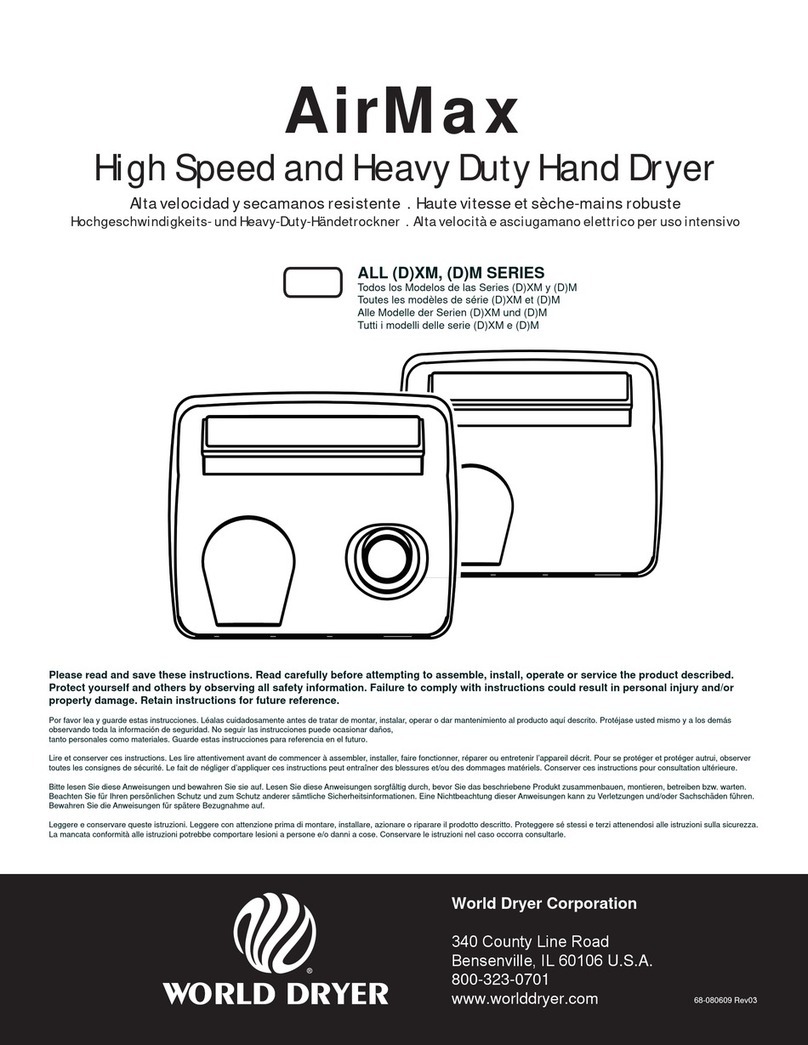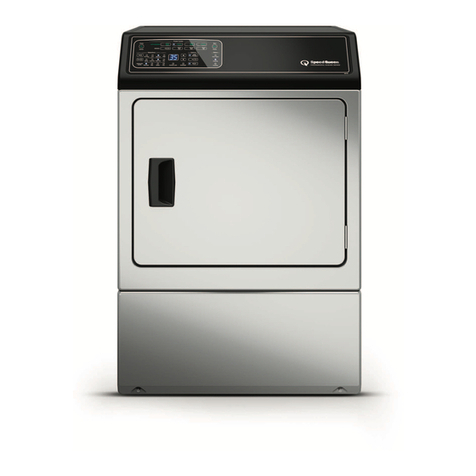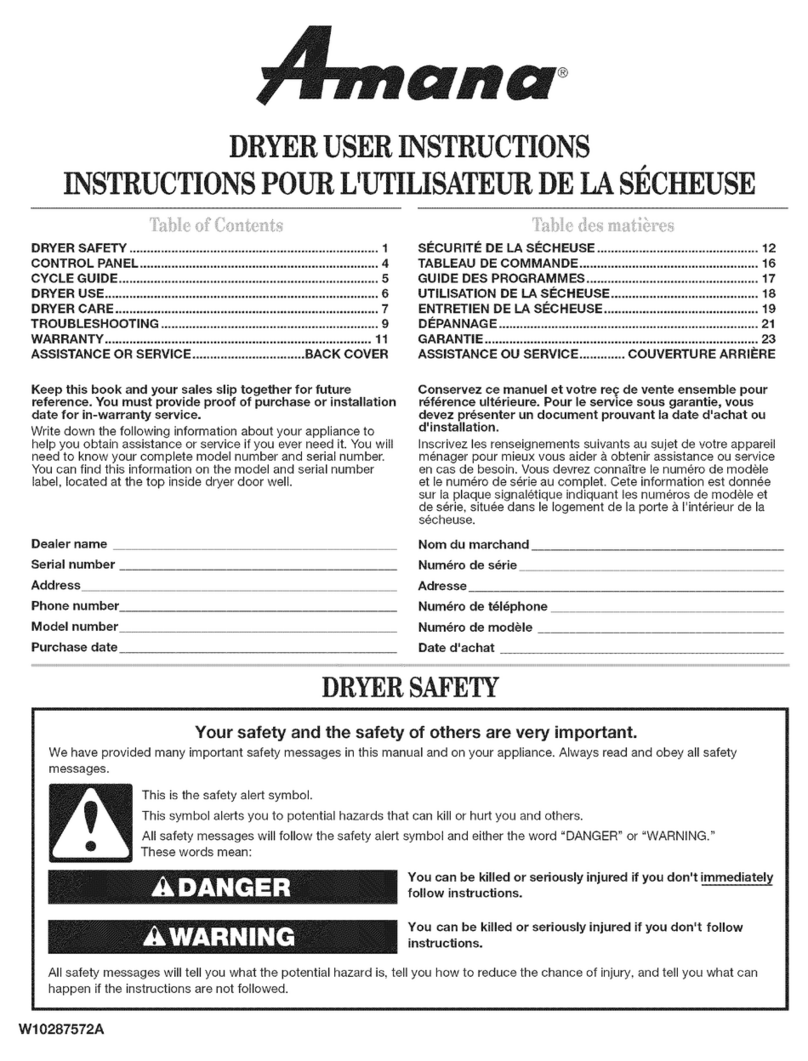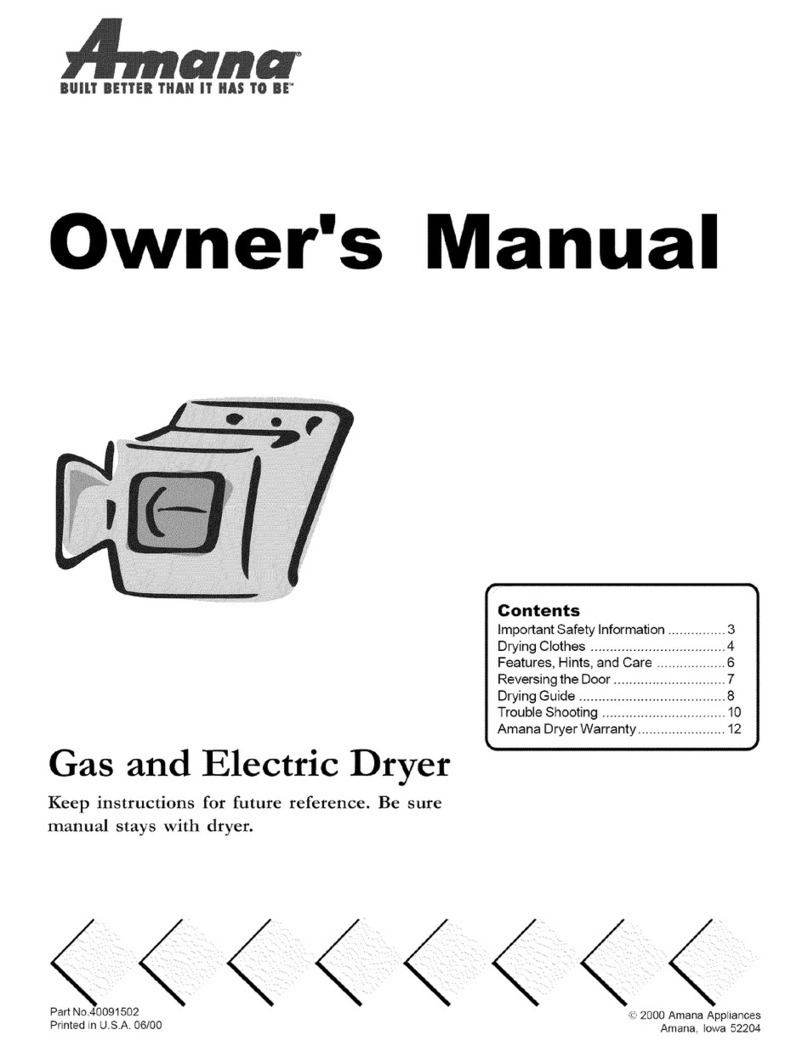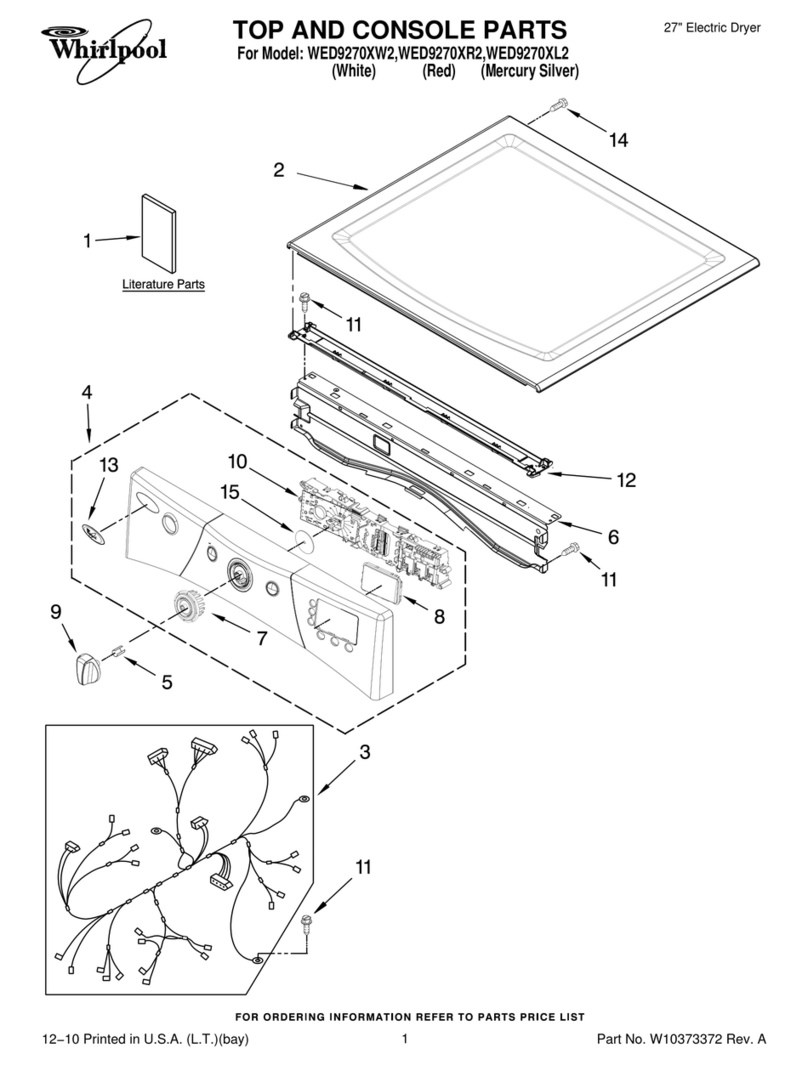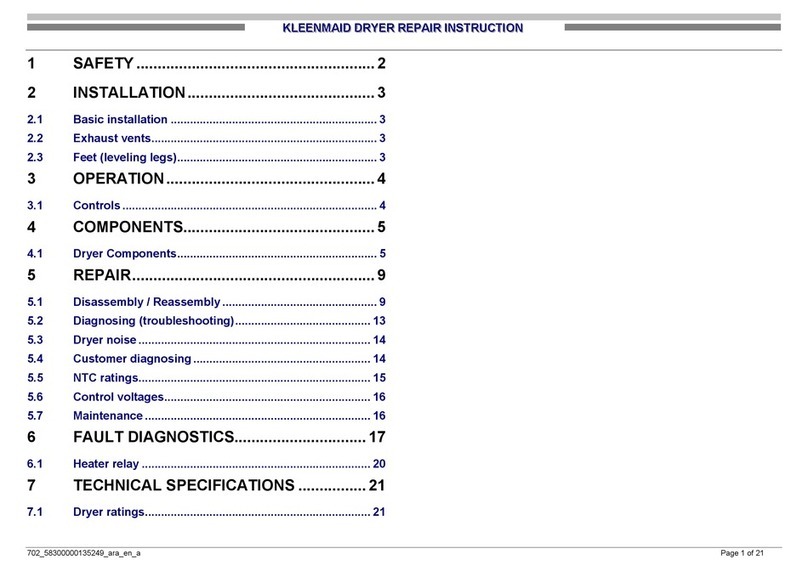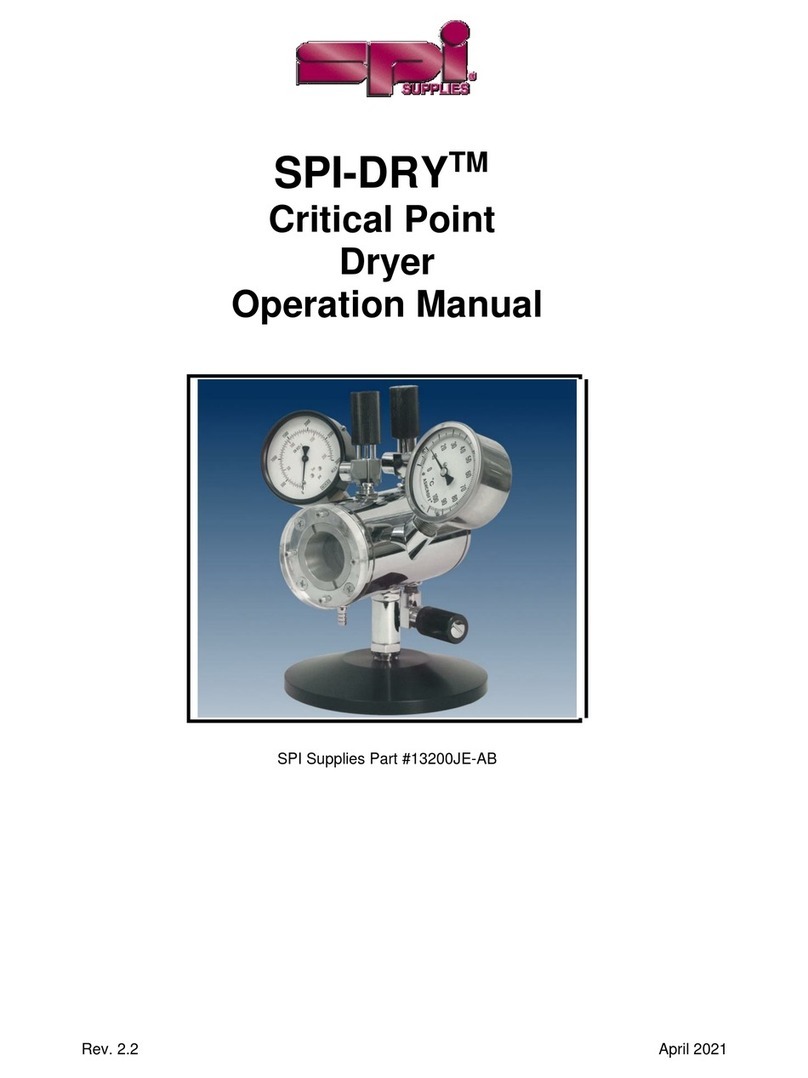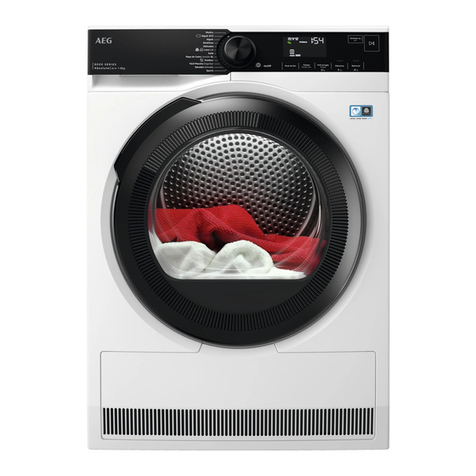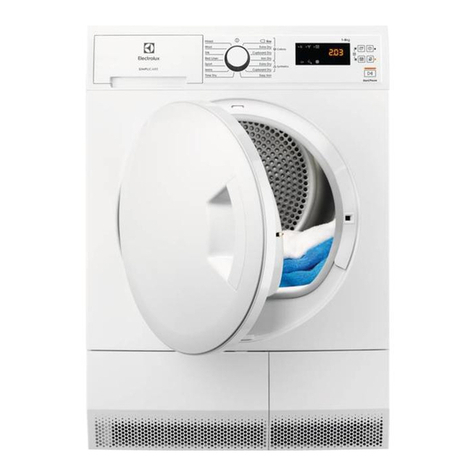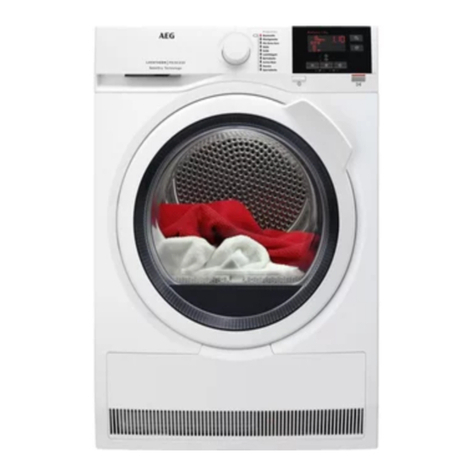Before Drying...
Energy Saving Tips
•Make sure the lint filter is
always clean.
• Do not overload the dryer.
• Do not overdry items.
• Remove items to be ironed
while still damp.
Large loads of similar fabrics
dry the most efficiently.
However, dry permanent press
in smaller loads to prevent
wrinkling.
•Use the correct FABRIC
SELECTOR setting for the type
of fabric being dried.
• Locate your dryer so the
exhaust duct is as short and
straight as possible.
• Do not open the door during
the drying cycle.
• Plan to do your laundry on
low humidity days; your
clothes will dry faster.
Dry multiple loads of clothes
one right after another so
dryer interior does not have to
be reheated for each load.
Helps and Hints
-&WARNING
To reduce the risk of fire,
explosion, serious injury or
death, clothes which have
traces of any flammable
substances such as cooking
oil, machine oil, flammable
chemicals, thinner, etc. must
not be put into the dryer.
Regular or *Untreated Clothes
Aproperly sorted wash load is
generally a dryer load. In both
washing and drying, the bulk or
volume ofclothes, ratherthan
pounds, willdetermine the
load size. The dryer cylinderis
large and isdesigned to dry a large
or average load at maximum
efficiency. DO NOT OVERLOAD
THE DRYER -- MAXIMUM LOAD:
Dryer cylinder one thirdto one half
fullof wet clothes.
Loads consisting ofseveral small
pieces only, such as knit shortsor
diapers, do not tumble well and
may require longer drying time
which could result in excessive
wdnkling. Add several towels to aid
tumbling. Large and small items
together make the best load for the
dryer.
For the most even drying, fabrics in
a load should be of similar weight.
If mixed loads are dded, remove
the lighter weight fabrics when they
are dry. Avoid overdrying to
prevent harshness of fabrics,
wrinkling, and possible
shdnkage.
Clothing loads mustbe cooled
properly at the end ofthe drying
cycle. Do not remove them from
dryer until it has gone through cool-
down and the cycle is
completed.
*Treated clothes are those items
that will be labeled "FLAME
RETARDANT," "SCOTCH-
GUARD", TM etc. Followthe CARE
LABELS on these garments for the
proper washing and drying.
Permanent Press and Synthetics
These loads will require the
following special treatment to get
the best resultsfrom their
"no-iron" properties.
Static electricity may cause
garments of synthetic fibers
(as in lingerie) to cling together,
especially if they are overdried.
The use of a liquid fabric
softener in the rinse water of
the washer will soften clothes
and reduce static electricity.
Do not wash or dry clothes that
shed lint in the same load with
permanent press or knit
garments.
•Remove permanent press
loads immediately after dryer
stops.
Exhaust System
--&WARNING
A clothes dryer produces
combustible lint. To reduce
the risk of fire, serious injury
or death, the dryer MUST be
exhausted to the outdoors.
Do not use plastic or thinfoil
flexible ducting.
The necessary suggestions and
directions for installationand
proper exhausting are given in
the INSTALLATION
INSTRUCTIONS which are
included with the dryer.
The exhaust duct should be
cleaned periodically to remove
any obstructions.
Check occasionally to make
sure the flapper on the weather
hood moves freely, is not
pushed in and that nothing has
been set against it. Also check
that the flapper is not standing
open. If itis open, leaves or
even snow could restdct it. Any
restrictionof the air from the
dryer will decrease drying
efficiency.
6 5o3¢z75




